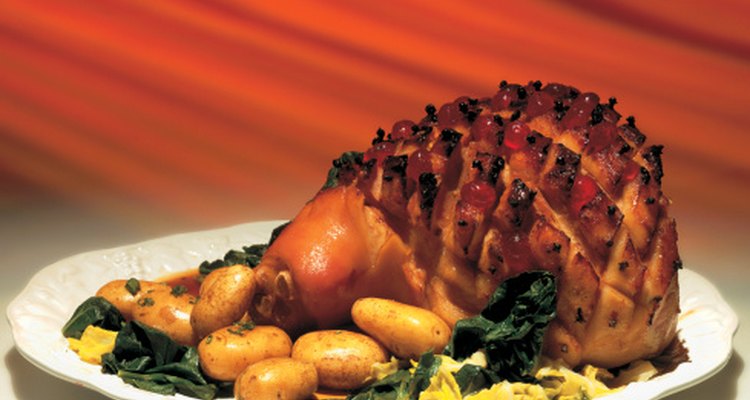
Also known as fresh ham, pork leg is the hind leg of a pig. The front leg is known as pork shoulder. Pork leg is available boneless or bone-in, and is usually cut into the rump, shank and center portions as the entire leg weighs from 15 to 25 lbs. An entire boneless pork leg serves 10 or more people, so it is a good idea for a family gathering. You may have to ask your butcher to order a whole boneless pork leg for you, or cook a smaller portion for a smaller group.
Preheat your oven to 350 degrees Fahrenheit.
Put the pork roast in a roasting pan. Remove the skin, if it has been left on. Score the fat with a knife. Tie the roast tightly with butcher's twine.
Combine the minced herbs, garlic and olive oil in a small mixing bowl. Stir to combine the ingredients. Rub the oil mixture all over the pork roast. Sprinkle the roast generously with salt.
Roast for four to five hours, until the roast is well-browned and the internal temperature is 160 degrees Fahrenheit, measured with an instant-read thermometer inserted into the thickest part of the roast.
Remove the roast from the oven, cover it with foil and allow it to rest for 20 minutes before slicing it.
Related Articles

Roasting Instructions for a Half Loin ...

How to Cook a Four-Pound Sirloin Tip ...

How to Cook a Choice New York Roast

How to Make a Juicy Pork Tenderloin

How to Cook a Boneless Turkey in the ...

How to Cook Pre-Seasoned Porketta

How to Cook Tender Rolled Flank Steaks ...
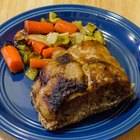
How to Cook Pork Roast in an Oven

How to Roast an Eye Round Roast at High ...

How to Cook the Neck of a Deer

How to Cook a Deer Neck Roast in a Slow ...
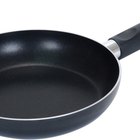
How to Cook Beef Top Round Pot Roast
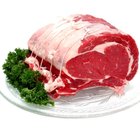
How to Marinate a Top Round Roast

How to Cook a Center Cut Sirloin of ...
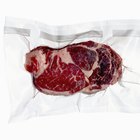
How to Defrost a Frozen Beef Roast in ...

How to Cook a Frozen Pork Fillet in the ...

How to Bake a Pork Loin Center Half

How to Respond to a Compliment From a ...

How to Cook a 15-Pound Rib Roast

How to Roast Italian Sausage
References
Tips
- Cook a smaller boneless pork leg, about 2 or 3 lbs., for one to one hour, 30 minutes until the internal temperature is 160 degrees.
- Make gravy with the pan juices.
- Marinate with an orange juice and olive oil vinaigrette for at least four hours, or up to 12 hours, before roasting the pork leg.
Warnings
- Don't rely on appearance or cooking time to judge doneness. Always use an instant-read thermometer to be sure meat has cooked thoroughly.
Writer Bio
Ramona French owned a massage school and taught massage for 28 years. In that time she wrote textbooks on Swedish, acupressure, deep tissue and lymph drainage massage. She is the author of "Introduction to Lymph Drainage Massage" and "Milady's Guide to Lymph Drainage Massage." Her book, "The Complete Guide to Lymph Drainage Massage," published by Milady, was released in October 2011.
Photo Credits
Stockbyte/Stockbyte/Getty Images